New products at Crocus
by Sarah - May 20th, 2009.Filed under: Crocus, New Products.
New lines today at Crocus
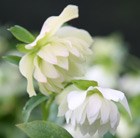
hellebore £15.99
Attractive, pendent or outward-facing, saucer-shaped cream, double flowers from February to April above leathery, deep green leaves. This lenten rose makes a stunning ground cover to light up areas of dappled shade under deciduous trees and shrubs. Like all hellebores, they prefer a heavy, neutral to alkaline soil.Position: partial shadeSoil: heavy, neutral to alkaline soilRate of growth: average Flowering period: February to April Flower colour: double creamOther features: all parts of the plant cause severe discomfort if ingested; the sap may cause skin irritationHardiness: fully hardy (borderline)Garden care: Add lots of well-rotted leaf mould or organic matter to the planting hole. Apply a generous 5-7cm (2-3in) mulch of well-rotted organic matter around the base of the plant in autumn and provide a top-dressing of general fertiliser each spring
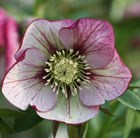
hellebore £15.99
Position: partial shadeSoil: heavy, neutral to alkaline soilRate of growth: average Flowering period: February to April Flower colour: pinkOther features: all parts of the plant cause severe discomfort if ingested; the sap may cause skin irritationHardiness: fully hardy (borderline)Pretty, pendent or outward-facing, saucer-shaped, pink flowers from February to April and leathery, deep green leaves. This is an attractive variety which is perfect as a ground cover for areas of dappled shade under deciduous trees and shrubs. Like all hellebores, they prefer a heavy, neutral to alkaline soil.Garden care: Add lots of well-rotted leaf mould or organic matter to the planting hole. Apply a generous 5-7cm (2-3in) mulch of well-rotted organic matter around the base of the plant in autumn and provide a top-dressing of general fertiliser each spring.
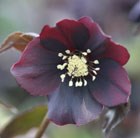
hellebore £13.99
Position: partial shadeSoil: neutral to alkaline soil, including heavy soilRate of growth: average Flowering period: February to AprilHardiness: fully hardyA stunning variety with large, saucer-shaped flowers from dark purple to almost blue-black from late winter to early spring. The handsome evergreen foliage is leathery, deeply cut and dark green. This lenten rose is grown from seed, so colour variations may occur. It is best planted in groups at the front of a partially shady mixed border, or near the house, among narcissi or snowdrops, that will set off the dark tones of the flowers. In former times, hellebores were planted close to cottage doors to prevent evil spirits from crossing the threshold.Garden care: A top tip from the Crocus crew is to cut back the old leaves down to the ground in January or February. This will show off the emerging flowers to best effect and it also helps to get rid of foliar diseases such as hellebore leaf spot. Add lots of well-rotted leaf mould or organic matter to the planting hole. Apply a generous 5-7cm (2-3 in) mulch of well-rotted organic matter around the base of the plant in autumn and provide a top-dressing of general fertiliser each spring.
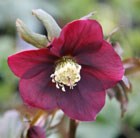
hellebore £13.99
Position: partial shadeSoil: heavy, neutral to alkaline soilRate of growth: average Flowering period: February to AprilHardiness: fully hardy (borderline) Nodding or outward-facing, saucer-shaped, flowers open in February in varying shades from deep pink to clear red. The flowers last for up to 3 months and the handsome evergreen foliage is leathery, deeply cut and dark green. One of the earliest flowering plants, lenten roses have most impact planted in groups at the front of a partially shady mixed border where they can be seen through windows in winter. Or try them as ground cover beneath deciduous shrubs or among spring-flowering bulbs. In former times, hellebores were planted close to cottage doors to prevent evil spirits from crossing the threshold.Garden care: A top tip from the Crocus crew is to cut back the old leaves to the ground in January or February. This will show off the emerging flowers to best effect and it also helps to get rid of foliar diseases such as hellebore leaf spot. When planting, add lots of well-rotted leaf mould or organic matter to the planting hole. Apply a generous 5-7cm (2-3in) mulch of well-rotted organic matter around the base of the plant in autumn and provide a top-dressing of general fertiliser each spring.
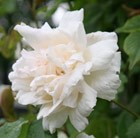
Noisette Rose £9.99
Position: full sun or partial shade (it's one of the best roses for a north facing aspect)Soil: fertile, humus-rich, moist, well-drained soilRate of growth: average to fast-growingFlowering period: July to SeptemberFlower colour: white to pale pinkOther features: scented flowersHardiness: fully hardyFragrant, fully double, white to pale pink flowers from July to September and light green leaves. This reliable, repeat-flowering, old climbing rose is ideal for a north-facing site. A popular and hardy climber since Victorian times, its slender, pliable stems are particularly suitable for training over a rose-arch, fence or wall.Garden care: Before planting shorten thick roots to 25cm (10in) and reduce top-growth to an outward-facing bud 8-15cm (3-6in) above ground-level. Plant during a frost-free spell, incorporating well-rotted organic matter and a balanced fertiliser into the planting hole. Ensure that the 'bud union' (the bulge at the base of the shoots) is 2.5cm (1in) below the soil.All our roses are field grown. In October/November they are dug up and potted. However, they will not produce any new roots until spring, so don't be surprised if the compost falls away from the roots when winter planting. Some suppliers send out 'bare root' plants unpotted, but we don't as it is easier to manage them on the nursery in pots.
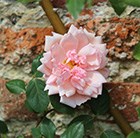
rose (Rambling) £9.99
Position: full sunSoil: fertile, humus-rich, moist, well-drained soilRate of growth: fast-growingFlowering period: June and JulyFlower colour: light salmon-pinkOther features: excellent cut-flowersHardiness: fully hardyFabulously fragrant, fully double, light salmon-pink flowers on reddish-green stems in June and July and mid-green leaves. This vigorous rambling rose is perfect for training over an arch or pergola or a large sunny expanse of wall. A popular and reliable variety, the strongly scented blooms make excellent cut-flowers.Garden care: Before planting shorten thick roots to 25cm (10in) and reduce top-growth to an outward-facing bud 8-15cm (3-6in) above ground-level. Plant during a frost-free spell, incorporating well-rotted organic matter and a balanced fertiliser into the planting hole. Ensure that the 'bud union' (the bulge at the base of the shoots) is 2.5cm (1in) below the soil.All our roses are field grown. In October/November they are dug up and potted. However, they will not produce any new roots until spring, so don't be surprised if the compost falls away from the roots when winter planting. Some suppliers send out 'bare root' plants unpotted, but we don't as it is easier to manage them on the nursery in pots.






